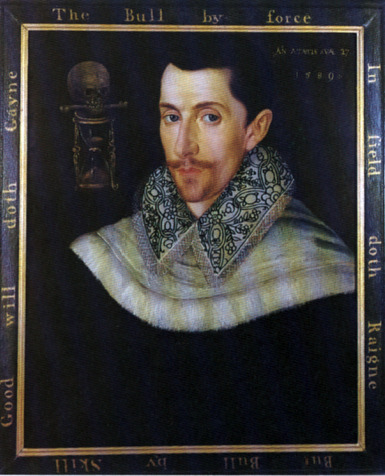John Bull is the national personification of Britain and, in particular, of England, especially in political cartoons.
The character John Bull was created in 1712 by Dr John Arbuthnot in his pamphlet The History of John Bull as a means of assisting the Tory Government in its efforts to end the Spanish War of Succession. The figure of the country farmer as representative of England caught on quickly. By the 1760’s he was depicted as a stout, middle-aged, country dwelling farmer, a jolly, matter-of-fact man. He is also often depicted with a bulldog, a further symbol of England, and a low top hat, sometimes now called a John Bull topper. His girth, commonly described as “stout”, comes from an age where rosy cheeks and plump faces were a sign of good health.
John Bull was further popularised by being depicted by cartoonists in Punch in the mid and late 19th centuries but the image has been less used since the 1950’s.
He was originally depicted as wearing a pale waistcoat and a blue frock coat. By the 20th century his waistcoat depicted the Union Jack.
John Bull's surname is reminiscent of the alleged fondness of the English for beef, reflected in the French nickname for English people les rosbifs (the "Roast Beefs").
He is a well intentioned character with sound commonsense. Whereas the later Uncle Sam image is a figure of authority, John Bull is not characterised by power or defiance. Instead he is a country small landowner and farmer, a prosperous one who likes domestic peace and a glass of beer. At the same time he is a plain speaking, plain dealing, hardheaded, bold individual.
During the Napoleonic Wars, John Bull became the national symbol of freedom, of loyalty to king and country, and of resistance to French aggression. He was representative of the ordinary man in the street, willing to stand up to Napoleon no matter what.
By the 1800’s he had become a more assertive figure in domestic politics, someone who was prepared to criticise not only the government but also the royal family.
A 1904 German cartoon commenting on the Entente Cordiale: John Bull walking off with Marianne, turning his back on Germany. (Marianne is a national emblem of France, representing the state and values of France, differently from another French cultural symbol, the "Coq Gaulois" [Gallic rooster] which represents France as a nation and its history, land and culture).
WW1 recruiting poster
Today John Bull remains the personification of the character of the English: honest, generous, straightforward, enjoying life and ready to stand up and fight for what he/she believes in.
Funnily enough, there was a real John Bull, pictured above. He lived between 1562 and 1628, long before 1712 when John Bull as a character first appeared. The real John Bull was an English composer and musician, well known as an organist and a virginalist. A what? No, that’s correct, a virginal was a form of keyboard instrument with a mechanism for plucking rather than hammering the strings. Which is not to say that his passion was only for music. After numerous scandals involving females, he fled England for the Netherlands in 1613 to escape various charges, including adultery, and to escape the wrath of both King James 1 and the Archbishop of Canterbury. The latter had said of him in 1612 “The man hath more music than honesty and is as famous for marring of virginity as he is for fingering of organs and virginals.”
In a connection with the symbolism of the literary John Bull, the real John Bull is often credited with having written the British national anthem God Save the Queen/King.







No comments:
Post a Comment
Note: Only a member of this blog may post a comment.